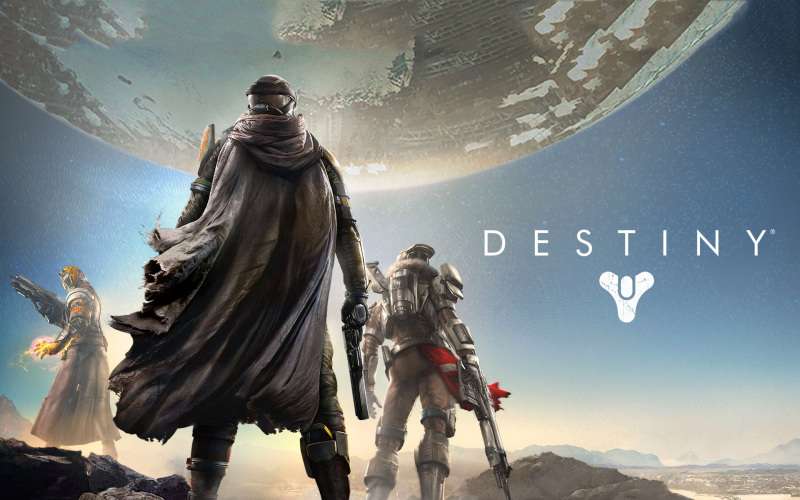
Destiny is a game that promised the moon: a persistent online world with dynamic environments, MMO elements, on-the-fly matchmaking, and next-gen graphics, all wrapped in a sci-fi storyline that would put Halo – Bungie’s former beloved series – to shame. And while you do, in fact, get to travel to the moon, it does not deliver the moon.
Destiny begins on Earth, a planet that undergoes an apocalyptic catastrophe. Choosing one of three races – which vary only in appearance but not skill or ability – you learn that humanity has been driven to the brink of extinction. An event known as “The Collapse” led to humanity’s downfall, just years after a Golden Age that saw vast scientific advancements and colonization of the solar system.
While reminiscent of Halo, the story starts out promising enough. You learn that mankind is holed up in one last remaining large city where it is protected by the “Guardians.” As one of the Guardians, your character is tasked with protecting Earth and eliminating an alien threat that has overtaken nearby former human colonies on the Moon, Venus, and Mars.

The problem is with the delivery after these first crucial story-driven missions. The narrative – told mostly through a Cortana-like robot known as the Ghost (who was initially voiced by Peter Dinklage of Game of Thrones fame before a patch replaced his dialogue with a different voice actor) – becomes almost completely incoherent and trivial. You will simply want to block out the Ghost, who spends most of the game rambling about how he screwed up and set off an alarm, underestimated the threat, or some other blathering nonsense that contributes nothing to the game. It gets old, fast.
Disappointingly, the sparse cutscenes add even less to the overall experience. Worse still, you never run across any characters with the slightest amount of charisma. Shooters may not be well-known for having great character development, but Borderlands at least had Claptrap to keep things interesting; Halo‘s Master Chief – while mute most of the game – was mysterious; and BioShock constantly kept fans digging for more on the insane villains in that universe.
After the initial start-up, each mission in Destiny is set out through an on-screen menu system that lets the player choose a destination. You have the option to play levels out of order and can set the difficulty higher for an experience bonus. Your ship then “flies” to the mission destination, although you do not actually get to do anything. It is simply a load screen. The action starts when you are on the ground.
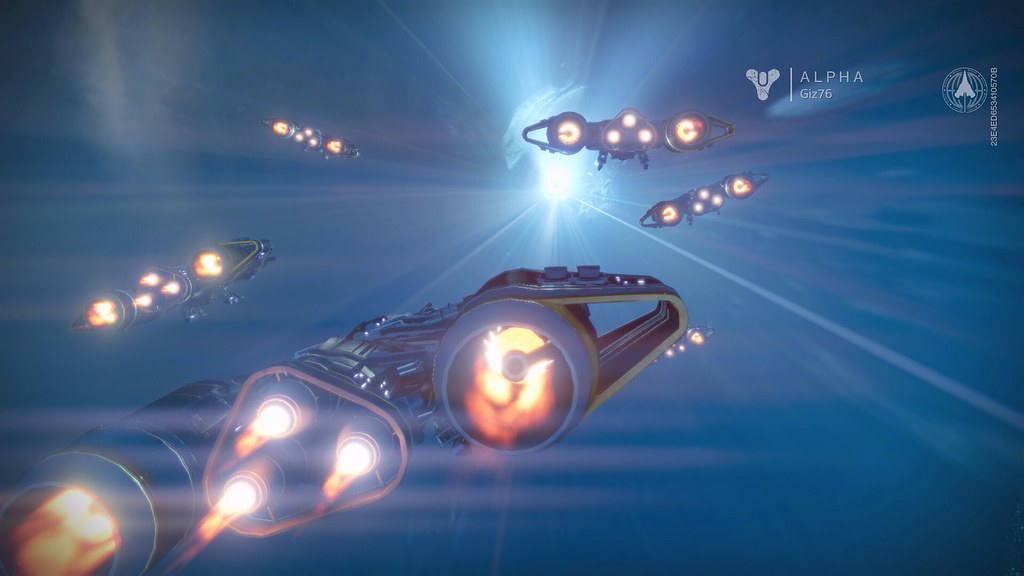
There is nothing fundamentally wrong with this design choice, although it does serve to remind you that this is a game, not the “living” world that Bungie promised. When you do finally land your ship, you get right down to business. Your character is accompanied by the Ghost, who usually lays out a short synopsis of what your mission is and where to venture. The HUD gives you directions to your mission, and while you can choose to ignore it and explore the world, there really are few incentives to do so.
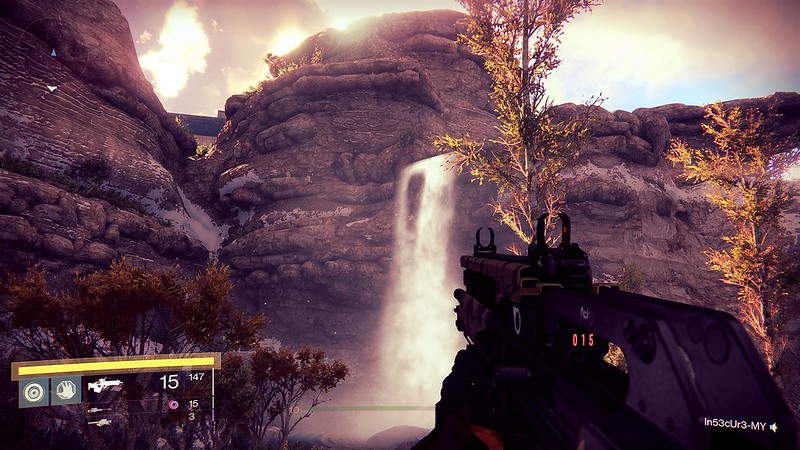
Destiny does not have dynamic side missions – such as, say, Grand Theft Auto V – although there are “events” that happen very rarely where you are asked to assassinate a specific target. There are also optional objectives that you can acquire at the Tower, a hub-like world like one you would find in an MMO.
Destiny, for all of its hype, does not go outside the box of first-person shooter conventions. Yes, it has RPG elements but nothing that games like Borderlands had not already done. Sadder still, the “living” open world feels barren, reduced to enemy outposts where AI respawn in the same spots within minutes.
The problems do not stop there. I played the game on the Hard setting. While challenging, it is not what you would expect from a modern shooter. That is because the AI in Destiny is flat-out dumb.
Basic hit-and-run tactics will allow you to literally run circles around some enemies. They do not flank. They do not aggressively attack when you are badly outnumbered. They do not even go beyond a set distance to pursue you when you are weakened, allowing you to exploit an invisible boundary even during some boss battles. In a word, they are simply predictable, exactly what you do not want in a modern shooter.
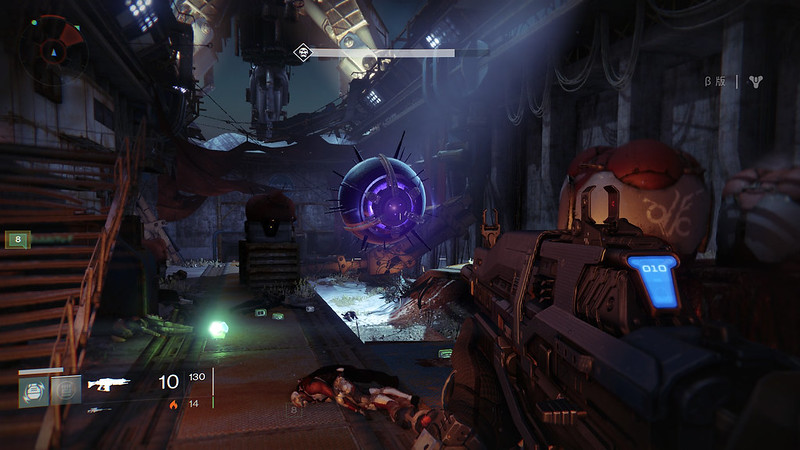
The only “difficult” spots — so much as you can call them that — come from playing in areas where your character is under the recommended experience level and thus simply cannot do much damage to enemies. This is not, in any sense, a difficulty curve in tactics. Their advantage comes from the fact that their damage and health stats vastly outnumber your own. The game also does a good job of throwing hordes at you to compensate for the brain dead AI.
Bungie could have easily remedied this with better AI programming, but it must not have been a priority. Perhaps Activision is to blame for rushing the product to market. I definitely could have seen just a six-month delay helping to fix a number of these issues, but they undoubtedly feared that a delay would cost their bottom line too much. A delay would have pushed the game past the all-important holiday shopping window.
Secondly, a delay would have been perceived as a tacit admission that their game was not ready for prime time, just a few months after gamers were burned on another new IP in the form of Ubisoft’s Watch Dogs. Nonetheless, a delay was warranted to correct these serious flaws.
Before we turn our attention to the good, I would like to mention one other thing. What is up with the physics in this game? You can jump extremely high on Earth, but when you get to the moon, it is as if you are wearing lead boots. I expected to vault along the low gravity surface of the moon. This would have been awesome! But for whatever reason, it did not happen. (Your vehicle, though, drives exactly the same on the moon as it does on Earth. Go figure.)
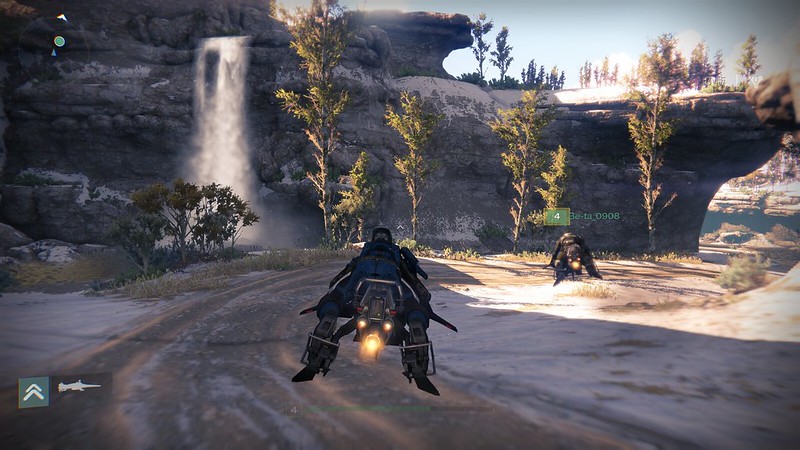
This is not to say that everything in Destiny is bad. The boss fights are the best part of the game by far. Halo was disappointingly light on bosses. Destiny is not. The game seems to revolve around them with each mission ending in a unique and challenging boss. They are the highlight of each mission.
As you would expect from a Bungie game, there are a large variety of weapons. Many of them feel like they were taken right out of Halo: the over-powered pistol, shotgun, sniper rifle and carbine (now with different names), and enemies have a needler-like weapon. Your weapons can be upgraded, on the fly, using acquired “glimmer” (Destiny‘s in-game currency) and any necessary experience that must first be earned to unlock the upgrade.

The Tower, the hub mentioned previously, is where you can buy new gear, emblems to deck out your character model, and powerful weapons. Unlike the missions, the Tower is completely in third-person, so you get to see what your character looks like as you deck out new gear. You can also interact with a number of NPCs here to receive goodies from missions, such as blueprints for weapons and gear that you find throughout the world.
Finally, there is the multiplayer element. While the cooperative parts are poorly designed in the sense that you rarely end up partnering with anybody in single-player missions (unless you have friends that own the game), the competitive multiplayer and matchmaking co-op missions are solid. I played each of the modes, including the raids, for several hours. I can confidently say that I had a good time, especially with the team-based competitive modes.
All told, the well-rounded experience that we expect from Bungie is just not here. If the single-player story was as solid as the multiplayer, Destiny would be close to a must-have game. Unfortunately, it is not. Its many flaws – while not outweighing the positives – bog down the experience to the point that the game can barely define its own destiny among countless, forgettable shooters.